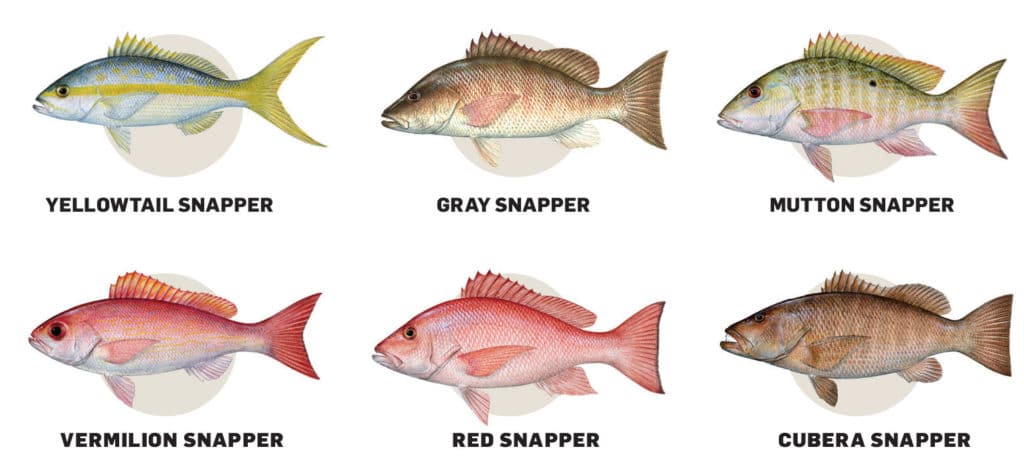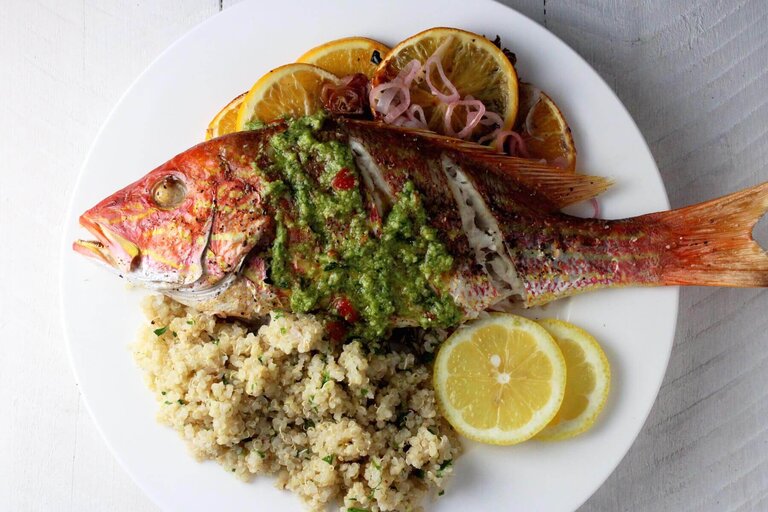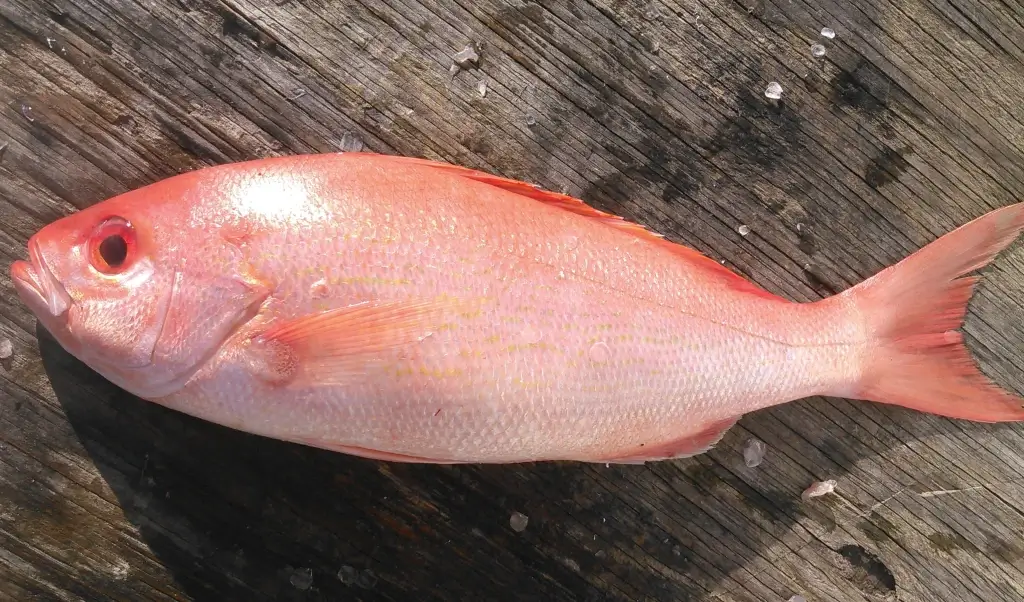What Does Snapper Taste Like? A Complete Guide
Curious about what does snapper taste like? You’re not alone! It’s a common question, and I’ve got you covered. In this blog, we’ll dive into everything you need to know about snapper fish taste. Whether you’re a seafood lover or just curious about trying something new, understanding the snapper flavor profile can help you decide how to enjoy it best. So sit back, relax, and let’s explore the delicious world of snapper together!

Snapper is probably one of the most versatile and highly valued fish in many cuisines, mainly because of its mild but distinctive flavor that so many find appealing. With a variety of different preparations, snapper provides chefs and home cooks with versatility. This article attempts to outline in detail what snapper tastes like, from its nutritional benefits to favorite recipes and expert opinions.
Overview of Snapper

Definition and Classification
Snapper is the common name for several different fish in the family Lutjanidae. They occur mostly in warmer waters like the Gulf of Mexico, the Caribbean, or along the Atlantic coasts.
Common Species of Snapper
- Red Snapper: Known for its bright red skin and firm, white flesh, red snapper is perhaps the most recognized species.
- Yellowtail Snapper: This species has a yellow stripe running along its body and a milder flavor compared to red snapper.
- Mangrove Snapper: Also known as gray snapper, it has a more pronounced flavor and slightly darker flesh. Mangrove snapper taste like a bit of a mild, sweet flavor with a hint of nuttiness, making it a delightful choice for various dishes. Its tender, flaky texture pairs wonderfully with a variety of seasonings and cooking methods.
- Lane Snapper: Recognizable by its pinkish color and yellow lines, Lane Snapper is often smaller and sweeter.
Snapper Flavor Profile

General Taste Description
Snapper is praised for its mild, slightly sweet flavor. Its flesh is firm, moist, and flaky, making it an excellent choice for various culinary applications.
Comparative Flavor Analysis
- Comparison with Other Fish: Snapper is often compared to grouper, sea bass, and halibut. Unlike the more oily salmon or mackerel, snapper’s flavor is subtler and less overpowering.
- Variation in Snapper Fish Taste: While all snappers share a general flavor profile, slight differences exist. For instance, red snapper tends to be richer, whereas yellowtail snapper has a more delicate taste.
Factors Influencing Snapper’s Taste

Diet and Habitat
The diet of smaller fish and crustaceans is also a major factor in snapper flavor. It’s also a good idea to ensure the snapper you’re fishing, buying, or having your boss bring home from his or her vacation in the Islands is freshly caught and acquired from cleaner, nutrient-rich waters. This is because the rich, clean environment only adds to the quality and flavor of your fish. You should pay attention to the source of your snapper when deciding; you want to opt for something that has great taste. The quality of the water your fish comes from can make all the difference.
Water Quality and Environment
We know that the taste and texture [of snapper] is very much helped by water quality. This is both tastier and healthier as any snapper caught in nice, clean waters rather than polluted ones. Clean water sources allow the fish to have a better taste and firm texture! “It’s fine for snapper whichever way you go,” he says of the method. “It just depends on where it’s from really. Go for fish from clear and unbrackish waters and you will appreciate a decent feast that is beneficial for both plant specialists too. And that’s it! See, quality does matter.
Seasonal Variations
Flavor can be affected by changes in the season, since changes in diet and water temperature often sway what time of the year they taste better. It is then that the flavor of your dish is at its peak. So, next time you’re selecting your red snapper, keep this in mind!
Age and Size of the Fish
The size and age of the snapper can affect its flavor. Younger, smaller snappers usually have a milder taste, while larger, older ones tend to pack a more robust flavor punch. It’s like the difference between a delicate whisper and a bold proclamation! There is always the perfect snapper to tickle those taste buds. A snapper is out there waiting to delight your taste buds, whether you are looking for something pedestrian or a little more bold regarding the flavor you are looking for.
Cooking Methods and Their Impact on Snapper Taste

Grilling Snapper
The truth of the matter is that when it comes to snapper, grilling should be kept real simple to bring out most of its great taste! It caramelizes the natural sweetness into the fish while counteracting that smoky flavor. Lightly seasoned with herbs and olive oil, it complements, not really overpowering the taste of the fish. Grilling snapper is a nice way to relish its fresh flavors with minimal fuss, be it in the backyard or a cozy dinner at home with a fire going. So grab your apron, and let’s enjoy a great bite of this finger-licking goodness!
Baking Snapper
Baking is the way to go for snapper; it retains the juicy goodness and brings forth the dainty taste. Adding a little bit of diced vegetables, some herbs, and a splash of wine in the baking dish will not just bring out the smell but will form a fragrantly aromatic meal. All that yum-baked snapper absorbs so many flavors in a serving that will be nutritious but really tasty. Whatever way you slice it, baking snapper is such an easy, unimposing way of treating oneself and those lovely ones in your life to a deliciously memorable dining experience. Ready for her!
Frying Snapper
Frying snapper is a fantastic way to achieve that perfect crispy exterior while keeping the inside tender and juicy. For a delightful crunch without overshadowing the fish’s flavor, a light batter or a dusting of flour does the trick. As the snapper sizzles away in the pan, it locks in all those delicious juices, resulting in a mouthwatering dish that’s sure to please. Whether you’re cooking up a quick weeknight dinner or hosting a special gathering, frying snapper is a surefire way to impress your taste buds and satisfy your craving for something crispy and delicious!
Steaming Snapper
Steaming is not only a healthy cooking technique but also a great way to preserve the natural goodness and delicate flavor of snapper. By gently cooking the fish with steam, it retains all its essential nutrients, ensuring a nutritious meal. To take it up a notch, adding aromatic ingredients like ginger and garlic infuses the fish with extra flavor and tantalizing aromas. Whether you’re aiming for a light and healthy dinner or simply looking to indulge in the natural taste of snapper, steaming is your go-to method for a delicious and satisfying meal that’s good for you too!
Poaching Snapper
Poaching snapper in a delicious broth or creamy coconut milk creates a dish that’s not only tender but also bursting with flavor. This gentle cooking method ensures that the fish remains moist and retains its delicate taste. As it simmers away in the fragrant liquid, the snapper absorbs all those aromatic flavors, resulting in a meal that’s both comforting and satisfying. Whether you’re cooking for a cozy dinner at home or entertaining guests, poaching snapper is a surefire way to impress everyone with a dish that’s as easy to make as it is delicious to eat!
Raw Preparations: Ceviche and Sashimi
Ceviche and sashimi highlight the natural flavor of snapper. The focus is on freshness—ensuring the fish is of the highest quality not only enhances the taste but also guarantees safety. So, when preparing these raw dishes, always start with the freshest snapper available. This is the key to a dish that is both delicious and safe to eat. Experience the pure, unadulterated taste of snapper with these raw preparations.
Pairing Snapper with Other Ingredients

Herbs and Spices
When cooking snapper, certain herbs and spices can really elevate your dish. Fresh herbs like parsley, cilantro, dill, and thyme are fantastic for adding a burst of flavor. For a bit more depth, consider spices such as paprika, black pepper, and cumin. These pairings complement the delicate taste of snapper perfectly, enhancing its natural flavors without overpowering them. Whether you’re grilling, baking, or frying, these herbs and spices will help you create a delicious and well-rounded snapper dish. Happy cooking!
Vegetables
Bell peppers, zucchini, and tomatoes are perfect companions for snapper, enhancing its mild flavor with vibrant colors and added nutrition. These vegetables not only make your dish look appealing but also boost its health benefits. Whether you’re grilling, baking, or steaming snapper, tossing in these veggies will create a tasty and wholesome meal. Enjoy the delightful combination of flavors and the burst of freshness they bring to your plate!
Fruits
Citrus fruits like lemon and lime bring out snapper’s natural sweetness beautifully, while tropical fruits like mango and pineapple offer a delightful, contrasting flavor. Adding these fruits to your snapper dishes not only enhances the taste but also adds a refreshing twist. Whether you’re grilling or baking, these fruity additions will elevate your snapper to a whole new level of deliciousness. Enjoy the vibrant, zesty, and tropical notes they bring to your meal!
Grains and Legumes
Rice, quinoa, and lentils are fantastic side dishes for snapper, offering a hearty base that perfectly complements its delicate flavor. These grains and legumes add substance to your meal without overpowering the fish. Whether you’re cooking a simple weeknight dinner or a special feast, pairing snapper with these nutritious sides will create a balanced and satisfying dish. Enjoy the blend of flavors and textures they bring to your plate!
Nutritional Value of Snapper
Now, let’s talk about the nutritional packaged goodness in snapper! This flavorful fish is not just scrumptious, but also healthy. Snapper is a nice source of high-quality protein, allowing the rebuilding and repair of muscles. Packed with associated vitamins, the ones required for healthy bones, namely, Vitamin D, and Omega-3 fatty acids for sound heart health, snapper is low in calories and saturated fats; thus, a wise food from the dietitian’s perspective, whether one looks for controlling weight or managing cholesterol levels. From the grill and oven into the steamer, the snapper ups the ante for nutrition most deliciously!
Popular Recipes Featuring Snapper

Grilled Snapper with Lemon and Herbs
Grilling snapper with lemon and herbs is a surefire way to create a delicious meal. Start by preheating your grill to medium-high heat. Season the snapper fillets with salt, pepper, and a drizzle of olive oil. Next, squeeze fresh lemon juice over the fish and sprinkle generously with chopped herbs like parsley, thyme, and rosemary. Place the fillets on the grill, skin-side down if they have skin, and cook for about 4-5 minutes per side, until the fish is flaky and opaque. Serve your grilled snapper hot with a final squeeze of lemon and a sprinkle of herbs for a fresh, flavorful dish that’s perfect for any occasion. Enjoy!
Baked Snapper with Garlic and Tomatoes
Baking snapper with garlic and tomatoes is a simple yet flavorful way to enjoy this delicious fish. Preheat your oven to 375°F (190°C). Start by placing snapper fillets in a baking dish. Drizzle with olive oil and season with salt and pepper. Scatter minced garlic and sliced cherry tomatoes around the fillets. For added flavor, sprinkle fresh basil or oregano over the top. Add a splash of white wine or lemon juice to keep the fish moist and enhance the flavors. Bake for about 20-25 minutes or until the fish flakes easily with a fork. The garlic and tomatoes will create a savory, juicy sauce that perfectly complements the tender snapper. Serve with crusty bread or a side of rice to soak up the delicious juices. Enjoy your delightful, homemade meal!
Regional Snapper Dishes

Caribbean Red Snapper Recipes
Caribbean Red snapper recipes bring a burst of tropical flavor to your plate. Start by marinating the snapper fillets in a mix of lime juice, garlic, and Caribbean spices like jerk seasoning or allspice. Let the fish soak up those vibrant flavors for at least 30 minutes. Then, grill or bake the snapper until it’s tender and flaky. Serve it alongside traditional Caribbean sides like rice and peas, fried plantains, or a refreshing mango salsa. The combination of zesty citrus, bold spices, and fresh seafood creates a mouthwatering dish that transports you straight to the sunny shores of the Caribbean. Enjoy the taste of paradise!
Mediterranean Snapper Dishes
Mediterranean snapper dishes offer a delightful fusion of flavors inspired by the coastal cuisines of countries like Italy, Greece, and Spain. To create a mouthwatering Mediterranean-style snapper, start by seasoning the fish with olive oil, garlic, and a blend of aromatic herbs like oregano, thyme, and rosemary. Top the fillets with slices of ripe tomatoes, briny olives, and tangy capers, then bake or grill until the fish is tender and flaky. Serve your Mediterranean snapper with a side of couscous, roasted vegetables, or a crisp salad dressed with lemon vinaigrette for a wholesome and satisfying meal. With each bite, you’ll be transported to the sun-kissed shores of the Mediterranean, savoring the vibrant flavors of the sea and the land.
American Snapper Cuisine
American snapper cuisine showcases the diverse culinary traditions found across the United States. From the coastal regions of New England to the Gulf Coast of the South, American chefs have embraced snapper as a versatile ingredient in their dishes. In New England, you might find snapper served in a classic seafood chowder or as part of a seafood boil. In the South, snapper might be blackened and served with a side of creamy grits or collard greens. Even in landlocked states, snapper can be found in innovative dishes like snapper tacos or grilled snapper sandwiches. Whether you’re dining at a seafood shack on the coast or a trendy bistro in the city, American snapper cuisine offers something for every palate, celebrating the rich flavors and culinary creativity of the nation.
The Difference Between Caribbean Red Snapper vs American Red Snapper

Caribbean red snapper and American red snapper may share a name, but they each bring their unique flavors to the table. Caribbean red snapper, often found in tropical waters, boasts a slightly sweeter taste with hints of tropical fruit, reflecting the vibrant flavors of the region. It’s often used in traditional Caribbean dishes like escovitch fish or curry snapper, where bold spices and zesty marinades take center stage. On the other hand, American red snapper, prized for its firm texture and mild, slightly nutty flavor, is a favorite in coastal American cuisine. Whether grilled, baked, or fried, American red snapper shines in classic dishes like snapper en papillote or Cajun-style blackened snapper. While both varieties of snapper offer delicious dining experiences, their distinct flavors showcase the diversity of culinary traditions found in the Caribbean and the United States.
How to Marinate Fresh Snapper

Marinating fresh snapper is a great way to enhance its flavor. Start with a base of olive oil, which helps keep the fish moist. Add a squeeze of fresh lemon or lime juice for a zesty kick, and toss in some minced garlic and ginger for depth. Selection of fresh herbs like cilantro, parsley or dill for added flavor profile often combine with a pinch of salt and pepper as well. Your choice! Add some red pepper flakes if you like a little bit of heat * Combine ingredients in a bowl and mix; coat the snapper fillets. Pop them in the fridge for at least 30 minutes (but no more than two hours or it’ll be too much for the delicate fish) to let those flavours meld together. The most easy and simple marinade ever! tastes excellent with your snapper.
How to Select Fresh Snapper

Choosing fresh snapper is all about using your senses. First, check the eyes; they should be clear, bright, and slightly bulging, not cloudy or sunken. The skin should be shiny with vibrant, firm scales. Give it a gentle press—the flesh should bounce back, indicating it’s fresh and firm. The gills are another good indicator; they should be a deep red or pink, not brown or faded. Trust your nose, too: fresh snapper should smell like the ocean, clean and briny, without any strong fishy odor. If you’re buying fillets, look for moist, translucent flesh with no discoloration. By following these tips, you’ll ensure you get the best quality snapper for your next delicious meal!
Conclusion
Snapper is a versatile and delicious fish that offers a mild, sweet flavor suitable for a variety of culinary applications. Whether grilled, baked, fried, or served raw, snapper is sure to delight. Its nutritional benefits and relatively low environmental impact make it an excellent choice for health-conscious and environmentally-aware consumers.
By exploring the various aspects of snapper, from its taste and cooking methods to its cultural significance and health benefits, we hope to inspire you to incorporate this delightful fish into your culinary repertoire.




